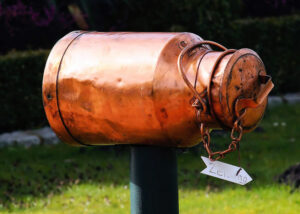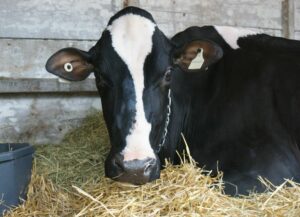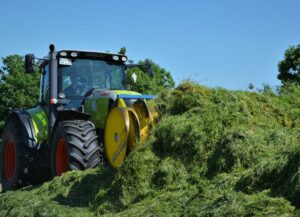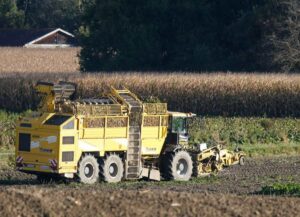Alvaro Garcia
Mastitis is an inflammation of the udder caused by microorganisms that enter the gland through the teat canal. Once inside the gland, these organisms find ideal conditions in which to multiply and, in turn damage the lining of the milk ducts, cistern, and alveoli. Contagious bacteria are spread from a cow with an infected udder to a healthy cow.
Transfer of pathogenic bacteria between cows usually occurs at milking time. Milker hands, towels, or the milking machine can all act as reservoirs for contagious bacteria. The major contagious pathogens are Streptococcus agalactiae, Staphylococcus aureus, and Mycoplasma spp.
The most important approach to minimize the transmission is to address potential sources of contagion at milking time. Cleaning the cluster between milkings has been used in commercial farms for quite some time. However, submerging the cluster in hot water (85°C) has been found not very effective in reducing the number of new intramammary infections.
Similarly, flushing has not achieved the complete eradication of new infections. Flushing with just cold water is frequently used in commercial farms since it is less costly, does not damage the equipment that much, and reduces the risk of residues in milk. Adding disinfectants to the water has also been explored as an alternative solution.
Using an iodine solution has been demonstrated to reduce intramammary infections by Corynebacterium bovis and coagulase-positive staphylococci. Given these results it seems that teat cleanliness, teat dipping, and an adequate milking routine are more effective in reducing the spread of infections than the attempts at washing or disinfecting the unit.
A recent experiment (Skarbye et al. 2020) evaluated the effect of flushing the system with cold water and water containing peracetic acid disinfectant on the concentration of Staphylococcus aureus in teat cup liners. Peracetic acid (also known as peroxyacetic acid, or PAA), is a colorless organic peroxide liquid with a characteristic acrid odor reminiscent of acetic acid. Peracetic acid however is a weaker acid than the parent acetic acid.
The study consisted of 2 parts: a main study evaluating the effect of flushing of teat cup liners, and a pilot study to aid the choice of sampling method and sample analysis for the main study. A Staphylococcus aureus strain was isolated from bovine milk and stored at −20°C and then cultured on an agar plate and incubated for 16 hours at 37°C.
Thirty-two clusters in a swing-over milking parlor were subjected to a simulated milking with Staphylococcus aureus –contaminated milk. Half of the clusters were not flushed (controls), whereas 8 were flushed with cold water (966 ± 32 mL) and the other 8 flushed with water containing peracetic acid (200 mL/mL).
Flushing with cold water removed all Staphylococcus aureus from the teat cups
A random teat cup in each cluster was sampled and cultured on the day following collection to determine the concentration of Staphylococcus aureus. In teat cup samples from control clusters, the mean concentration of Staphylococcus aureus was 2.8 × 105 cfu/mL. There was no Staphylococcus aureus found in teat cup samples from clusters flushed with cold water.
In teat cup samples from clusters flushed with water and peracetic acid, the concentration of Staphylococcus aureus was in general reduced compared with control clusters, but not eliminated completely. Automatic cluster flushing with 966 mL of cold water removed all Staphylococcus aureus from teat cup liners subjected to simulated milking with Staphylococcus aureus–contaminated milk.
Addition of peracetic acid thus seemed to be unnecessary because water without this acid was enough to remove all bacteria. In the laboratory, Staphylococcus aureus remained detectable by PCR following disinfection with peracetic acid. However, the viability and pathogenicity of the PCR-detectable Staphylococcus aureus was unknown, which suggests this technique is not feasible for analysis of samples subjected to peracetic acid.
Based on these results, it was concluded that automatic cluster flushing with cold water was effective in removing Staphylococcus aureus from teat cup liners and that the addition of peracetic acid was unnecessary.
Reference
Alice P. Skarbye, Peter T. Thomsen, Mogens A. Krogh, Line Svennesen, and Søren Østergaard. Effect of automatic cluster flushing on the concentration of Staphylococcus aureus in teat cup liners. 2020. J. Dairy Sci. 103:5431–5439.
© 2020 Dairy Knowledge Center. All Rights Reserved.








